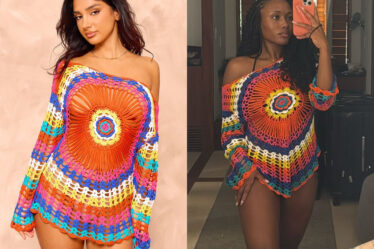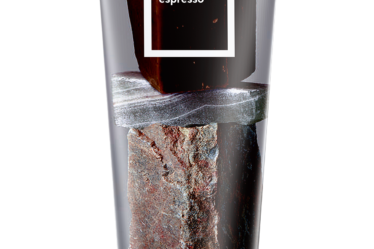
With the headline “Bye-bye booty: heroin chic is back”, a New York Post article this month announced that thin is in, again. Or maybe it never left. No, it left, but has returned, perhaps as a backlash to the past decade of progress on size inclusivity in the fashion industry.
The response to the Post’s glorification of heroin chic was a wave of dissent. “OUR BODIES ARE NOT TRENDS. SAY IT WITH ME,” Jameela Jamil wrote on Instagram. “I’m starting Not Hungry Chic. Happy Chic. Fu*ck off Chic? Anything but this.” The Vogue culture writer Emma Specter tweeted: “Do people who insist the return of crop tops and low-rise jeans means we all have to adhere to early-aughts levels of compulsory thinness realize i will just………wear those things w my large and beautiful stomach hanging out?”
A slew of articles have come out with writers worrying that brands have co-opted the body positivity movement of the 2010s, rendering it meaningless, or positing that our obsession with thinness never went away.
The Post headline seems to be conflating “heroin chic” – the 90s look characterized by grunge Calvin Klein ads featuring avatars like Kate Moss and Jaime King – with general thin-worship, a perennial problem in the industry. Both are concerning, but the term “heroin chic” comes off as especially problematic, given the current opioid crisis and its devastating past.
“Heroin chic” is not just an aesthetic: it was coined after the overdose of the wunderkind photographer Davide Sorrenti. His mother campaigned for reforms in the fashion industry to honor his short life and called magazine editors urging them not to cast heroin users.
Gia Carangi, one of the first supermodels (who was played by a young Angelina Jolie in a 1998 HBO film), was a heroin user who died from Aids complications. Though remnants of her addiction showed up in photos – her track marks are visible in Vogue’s November 1980 cover – her lover and friend the makeup artist Sandy Linter doesn’t think her body fit into the strung-out aesthetic.
“Gia was booked for her beautiful body, boobs and all,” Linter told the Guardian. “No one ever wanted to book a very thin Gia. I don’t remember her ever wanting to be extremely thin. Gia always promoted her curves in every photo.”
Linter calls heroin chic “really just a term for a cool look. Gia had that effortlessly cool look. She was born with it. It has nothing to do with drugs.”
Atoosa Rubenstein worked at Cosmopolitan during heroin chic’s heyday. “I remember a new editor, Bonnie Fuller, came into Cosmo [in 1996] and put Jennifer Aniston on the cover. The fashion director was like, ‘Ugh, she is so fat.’ The fact that we thought Jennifer Aniston was fat is telling of that era.”
Things changed a bit as the 90s waned into the 2000s and fashion preferred a “healthier” – but still incredibly skinny – body type. “We did kill photoshoots because the girls were too thin and looked like they were perhaps ill,” Rubenstein said. “At least where I worked, there were some boundaries.”
When Rubenstein became an editor-in-chief at CosmoGirl and Seventeen, she brought in “real girl” models who wore larger sizes for shoots and covers. “We did show different body types, but when I think about women’s media [in general], they would do these ‘size issues’, which always seemed very condescending,” she said. “It was total tokenism, so they could feel good about what they were doing the 11 other months of the year. And I don’t know if it’s that different now.”
There is one difference. When Rubenstein was editing over 20 years ago, magazines were the only authoritative voice in fashion. “Opinions have become democratized, and so have our standards of beauty,” she said. “Social media allows for different types of body types to be celebrated. I’m not sure that I buy all of these new heroin chic headlines – they feel perhaps a bit inflated.”
You can still find skinny-worship on social media, though apps try to restrict content that glorifies eating disorders. TikTok has blocked the search term “heroin chic”, saying it violates content guidelines. Search “thinspo” on the app, and you’ll be redirected to resources like the National Eating Disorder Association. (The same goes if you look up the word “skinny” on Instagram.) But the fact that these precautions exist mean that young people were searching for thinspo to begin with – and will probably now go elsewhere to find it.
Rob Smith worked as a merchandise manager for Macy’s from the late 1980s to 2010, and then spent two years at Victoria’s Secret. He now runs the gender-inclusive clothing line the Phluid Project. He knows that Gen Z is nostalgic for the 2000s – but he doesn’t think that has to do with the standard body types from that era.
“The 2000s were a time of defiance, of rebelliousness, of irreverence in fashion,” he said. “We’re in an anti-fashion phase now, too. I highly support that, but it’s time to be more responsible than we were [back then] when it comes to understanding body dysmorphia and mental health.”
Brands use body positivity, Smith said, as a marketing tactic – but the feel-good messaging rarely impacts how clothing actually gets designed. “When you design, everyone works off of a fit model who is a [size small], and that’s their starting point,” Smith said. “They scale up from there. Products are designed for those sizes, so most brands are pushing for inclusion in a very performative way, but not when it comes to product creation.”



